Best cartridges 2025: budget and premium options for your turntable
Essential and easy upgrade for your record player
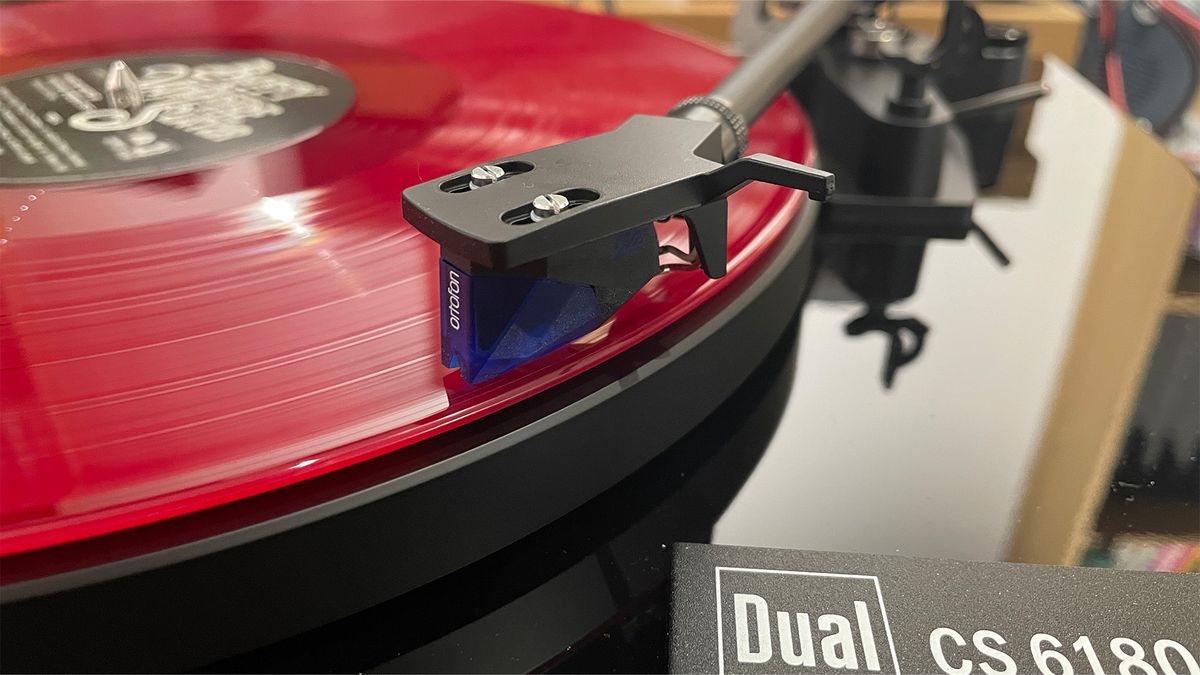
If your turntable setup is in need of a refresh, it's worth considering changing the current cartridge rather than swapping out the entire record player itself. It's a simple but effective change, and you might find yourself listening to your record collection with fresh ears thanks to a new, updated cartridge in your vinyl system.
Cartridges come in two types: moving magnet and moving coil. Moving magnet (MM) cartridges have a cantilever which transfers mechanical vibrations picked up from the record groove straight into movements of the cartridge's magnet. This movement of the magnet relative to the nearby wire coils induces current in those coils, which is then amplified and turned back into sound by the speakers. To use an MM cartridge, your amplifier will need an MM phono input to boost and equalise the low-voltage signal.
A moving coil (MC) cartridge, meanwhile, has a fixed magnet and mobile coil. This coil moves within the magnetic field created by the fixed magnet, generating an electromotive force. Because the coil's moving mass is lighter than that of a magnet there is less inertia and so the increased potential of resolving more information from the record groove. But do note that these types of cartridges tend to be more expensive and have a much lower output than MM types. To use an MC cartridge, your amplifier or phono stage will need the necessary gain and ideally the loading adjustments needed for this cartridge type.
We've included both types in our list of the best cartridges, which spans budget to premium models. We have been testing turntables and cartridges since the beginning of our time (well, since What Hi-Fi? was founded in 1976), and every cartridge on this list has been tested by our experienced, in-house reviewers with the appropriate turntable and system. You can find more in-depth advice on how to choose your cartridge and find out how we test cartridges, or simply scroll down to see our top picks.
The quick list
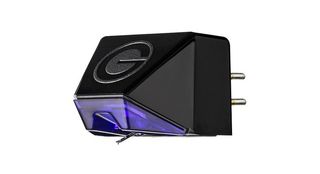
The best budget cartridge we've heard, with its capable, refined and expressive manner working with most affordable turntables.
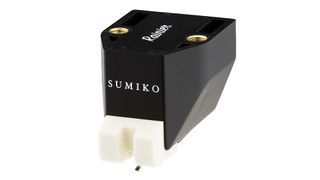
A fun, dynamic and musically cohesive cartridge that will lift your spirits and the performance of your turntable, provided it's of a good quality.
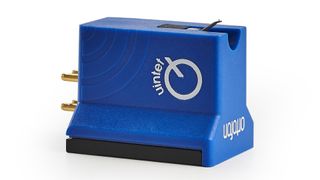
Agile, dynamic and precise, this is great value for an affordable moving coil model, and needs a suitably talented phono stage to shine.
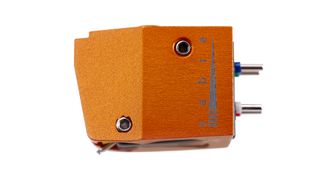
Yes it's pricy, but it's an incredibly fun performer that balanced energy and rhythmic prowess with fantastic insight and control. Pair with a premium deck and you'll never stop dancing.
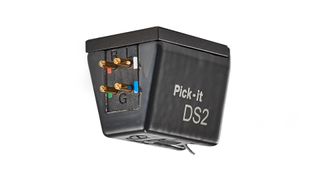
A robust, dynamically expressive, composed and entertaining MC cartridge that's worth every penny of its high asking price.

I have been reviewing hi-fi products, including turntables and cartridges, for over 25 years, and have been using record players for even longer than that. I've listened to (and changed) a variety of cartridges across the price range in my time, and have heard all of the cartridges recommended in this guide with a variety of turntables too. I am confident you'll find a cartridge to suit your deck and needs, and I would always recommend demoing a new cartridge combination where possible, especially when looking at higher-end options.
Best budget moving magnet cartridge
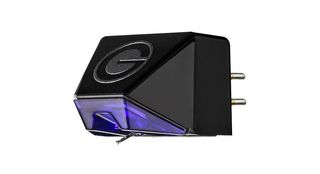
Specifications
Reasons to buy
Reasons to avoid
This impressive Goldring E3 is a cinch to fit and is compatible with plenty of turntables, making it a very versatile cartridge indeed. The sound is clean and precise, with plenty of clarity and power where required. It also handles rhythm well, and has attack in spades. The perfect accompaniment to many a midrange deck and easily one of the best cartridges we've heard at the affordable end of the price scale.
Read the full Goldring E3 review
Best mid-price moving magnet cartridge

Specifications
Reasons to buy
Reasons to avoid
Sumiko knows plenty about cartridge manufacturing. The company was founded in 1982 and continues to build all of its cartridges in Japan to this day. The Rainier moving magnet sits at the more affordable end of the company’s Oyster range and looks to be a good choice for those itching for that first upgrade to their turntable.
This Sumiko is a thoughtful design that’s easy to fit thanks to captive nuts inset into the body and sensibly squared-off edges that make fitting and alignment a breeze.
Once up and running it's a surprisingly musical and engaging performer. Detail levels are good, but it’s more the cohesive way that the Rainier delivers all that information that makes it special. We hear plenty of punch and a great dose of dynamics when it's required. In a carefully chosen system, this is a superb performer.
Read the full Sumiko Rainier review
Best mid-price moving coil cartridge

Specifications
Reasons to buy
Reasons to avoid
Ortofon has been making turntable cartridges since 1948, and it seems like all its expertise went into this one. The Quintet Blue moving coil is a true five-star product: simple to fit, not too heavy, so easy to balance out, and capable of a sound that's worth every penny of its asking price. It's an agile sound, with a high level of sonic precision that's brimming with detail. Plenty of refinement is evident too, and it's rhythmically surefooted with a good sense of attack.
Just make sure you partner it with the right kit, otherwise it'll be like fitting pram wheels to a Ferrari.
A strong alternative at this price is the Nagaoka MP-200 – it's a moving magnet rather than a moving coil, but is a terrific all-rounder that is worthy of consideration.
Read the full Ortofon Quintet Blue review
Best premium moving magnet cartridge

Specifications
Reasons to buy
Reasons to avoid
The Sabre moving magnet is a carefully considered design, as we’ve come to expect from Vertere. That bold orange body isn’t just for show. It’s machined out of a solid block of aluminium for rigidity and clamps onto the generator structure with four bolts rather than being glued on performance and alignment grounds. The cartridge body’s top is raised at three points to ensure a solid and even contact with the headshell, and the front of the top even has a ridge to aid easy alignment.
The result is a bold performer that's confident without being in any way overbearing. Listening to Orff’s rambunctious Carmina Burana, we can’t help but be thrilled by the energy and drive of the music. We said in our review: "The Sabre delivers this dramatic piece with all the gusto it demands. We get explosive dynamic peaks coupled with an impressive sense of control."
While the Sabre's high £845 / $1199 / AU$1695 price puts it deep into traditional moving coil territory, this is one premium moving magnet we can really get behind.
Read the full Vertere Sabre MM review
Best premium moving coil cartridge
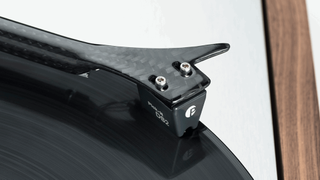
Specifications
Reasons to buy
Reasons to avoid
The Pick-it DS2's body is made of a synthetic polymer and shaped by laser, in a bid to create a low-resonance base and help performance. And it works. The sound is thoroughly robust and dynamically expressive, with plenty of punch and bags of bass. The presentation is composed, and there's a ton of detail to get your teeth into. It's a doddle to fit and align too, thanks to its square-shaped body. Costing £599, truly capable and musical performer.
Read the full Pro-Ject Pick-it DS2 review
Also consider
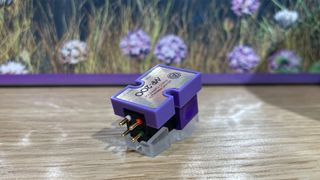
- Nagaoka MP-200: This mid-price MM cartridge is a fresh Award-winner and is a worthy alternative to the Ortofon Quintet Blue MC above. It delivers an all-round excellent performance, with strong dynamics, great detail, balance and precision and pleasing punch. Superb.
- Vertere Dark Sabre: Proving a high-end moving magnet cartridge can compete with the best of moving coils, the Dark Sabre MM delivers an impressively punchy and dynamic sound and digs out phenomenal levels of detail.
- Nagaoka MP110: A cheerful budget upgrade from a reputable brand, this MM cartridge delivers a sweet midrange, subtle detail and dynamics beyond its price point. We'd like less edgy treble and more bass weight, though.
- Ortofon 2M Blue MM: If you want a step up from the budget Ortofon 2M Red, the mid-priced Blue model is a more serious affair with better grip, timing and bass weight. We'd like it to dig out greater insight to go with that even-handedness.
- DS Audio DS-003: What's an optical cartridge? We didn't know either until we tested this unique, high-end cartridge that shows there is a third option for cartridge types, and it sounds fantastic when it comes to clarity, resolution and bass weight.
How to choose the right cartridge for you
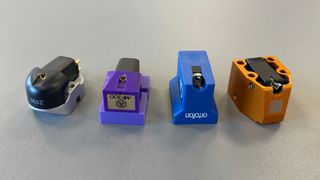
When choosing the right cartridge for your turntable, it's important to ask how much should you spend on a cartridge in the first place. As a rule of thumb, we suggest your cartridge's price should be about a quarter to a third of the price of your turntable. For instance, if you have a £200 turntable, then a £50-£70 cartridge should be adequate, while a £650 turntable (such as the Rega Planar 3) will require a cartridge that's about £150-£200 (such as the matching Rega Nd3 cartridge).
We have a more in-depth guide on how to change and fit a new cartridge to your turntable, but in general, most cartridges will fit onto most tonearms; you'll just need an alignment tool and a tracking force gauge if fitting the cartridge yourself. If you have a high-end turntable, it’s worth asking the dealer to set it up for you.
There are two types of cartridges – moving magnet and moving coil – and which type you go for will depend on the level (both in price and quality) of the rest of your system. For most turntables below £1000, it's best to stick with moving magnet (MM) cartridges. At this level, the partnering amplifier and phono stage can be of varying quality, and a moving magnet will put less of a spotlight on your phono stage's quality because it has a higher output.
If your turntable is at about £1500 and above, then it's worth looking into moving coil (MC) cartridges. At this higher price level, the partnering phono stage and amplifier in your system will need to be of a certain higher quality level too, and you will reap the rewards of an MC cartridge more in this context.
Many standalone phono stages and amplifiers (or streaming systems) with phono stages built in will quite often support both cartridge types. However, it's worth bearing in mind that even if a budget phono stage can support MC cartridges, it may not be worth investing as it likely won't be of good quality to show the benefits. Your phono stage has to be of a certain quality (and therefore higher price point) for the advantages of the higher-priced MC cartridges to be apparent in your system.
And lastly, you don't necessarily have to match turntable and cartridge brands, but many manufacturers that design their own cartridges (e.g. Rega, Vertere) tune them to match their own turntables. But there are plenty of cartridge makers whose models can be used with any turntable, especially when you get to high-end models – just make sure you read up on reviews (such as ours, of course) to ensure the sonic characteristics will match.
How we test cartridges
What Hi-Fi? has been reviewing turntables and cartridges of all types and across budgets since the magazine started in 1976, and we are proud to do all our testing in-house. We have state-of-the-art and acoustically treated testing facilities in London and Reading, where our team of experienced reviewers test everything from TVs to turntables, including cartridges.
We are always impartial in our testing and ensure we test and hear every cartridge at its optimum – fitted to the appropriate turntable and phono stage at its price level, and all placed on a sturdy and level surface. We make sure the cartridge is fitted correctly using the required tools and give them plenty of run in time before serious listening. We use each cartridge being tested in its best use case with the right electronics, as well as try out a few different options to see how it copes with a variety of products. We spend ample time testing each cartridge, playing a variety of records and genres of music to get the full picture. Here's a selection of the best vinyl records we use to test all things turntable-related.
What Hi-Fi? is all about comparative testing, so we listen to every cartridge we review against the current leader in its price point to gauge how it compares to the best-in-class competition. We keep What Hi-Fi? winners and a range of cartridges in our stockroom (as well as a variety of turntables) so we can always pit new products against ones we know and love, and we do our best to review as many new models in as many markets as possible to ensure our contextual knowledge is the best it can be.
All review verdicts are agreed upon by the team as a whole rather than an individual reviewer to eliminate any personal preference and bias, and to make sure we're being as thorough as possible. There's no input from PR companies or our sales team when it comes to the verdict, with What Hi-Fi? proud of having delivered honest, unbiased reviews for decades.
You can read more about how we test and review products on What Hi-Fi? here.
- These are the best record players for every budget
- Moving magnet vs moving coil cartridges: which is right for you?
- How to change the cartridge on your turntable
- Check out the best high-end record players we've tested
- How to get the best sound from your turntable
Get the What Hi-Fi? Newsletter
The latest hi-fi, home cinema and tech news, reviews, buying advice and deals, direct to your inbox.

Kashfia is the Hi-Fi and Audio Editor of What Hi-Fi? and first joined the brand 13 years ago. During her time in the consumer tech industry, she has reviewed hundreds of products (including speakers, amplifiers, turntables and headphones), been to countless trade shows across the world and fallen in love with hi-fi kit much bigger than her. In her spare time, Kash can be found tending to an ever-growing houseplant collection and shooing her cat Jolene away from spinning records.
- Ketan BharadiaTechnical Editor
-
Ozapata HelloReply
With all due respect, I think that knowing which is the best cartridge is subjective because you can choose any of the 10 brands mentioned and try them on pressed vinyl (the 70s to 90s) in the United States, Latin America, Germany, Japan or England and you will notice that the listening response is not the best in some cases; you must have a collection of cartridges that fit every need. -
Mrs.Wright Audio-Technica Canada has recently changed distributors. They used to use Erikkson Audio, but now are using a third party fulfillment center. Products are being shipped out of a Mississauga warehouse. Products that are returned are visually inspected and restocked as new and resold as new. Whether you're buying directly from AT Canada, or through an authorized dealer - the inventory comes from the Mississauga 3rd party logistics warehouse. I would strongly recommend avoiding Audio Technica products because there's a very strong chance you'll receive a previously used item.Reply